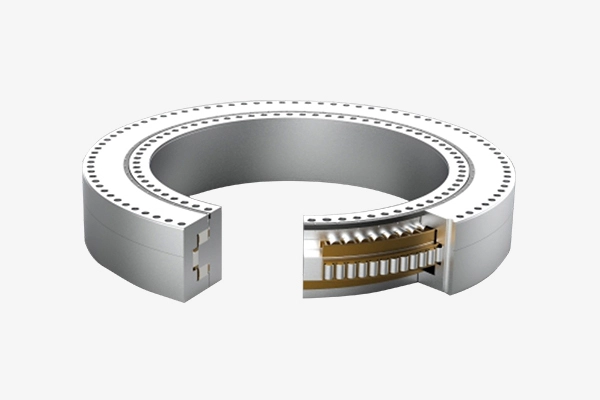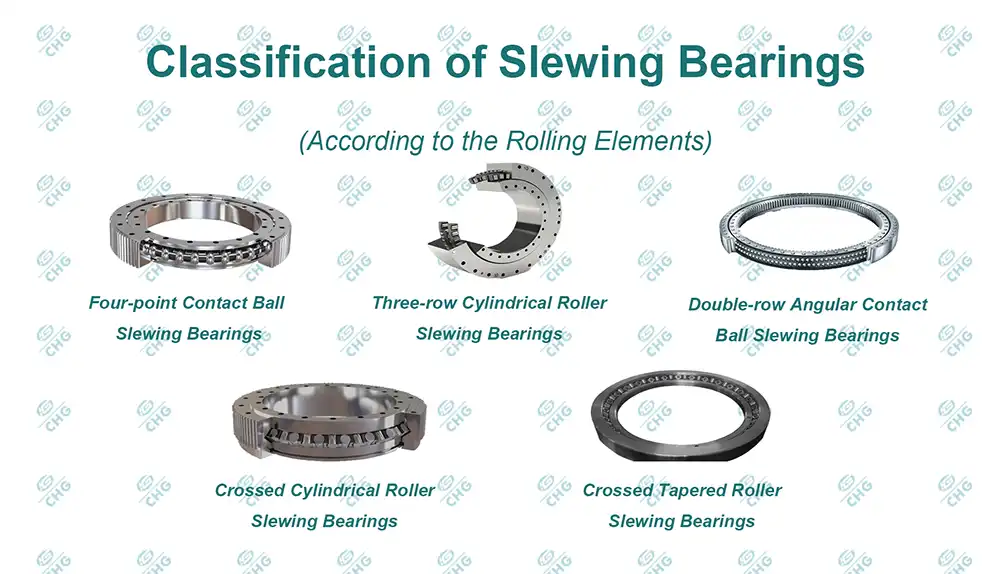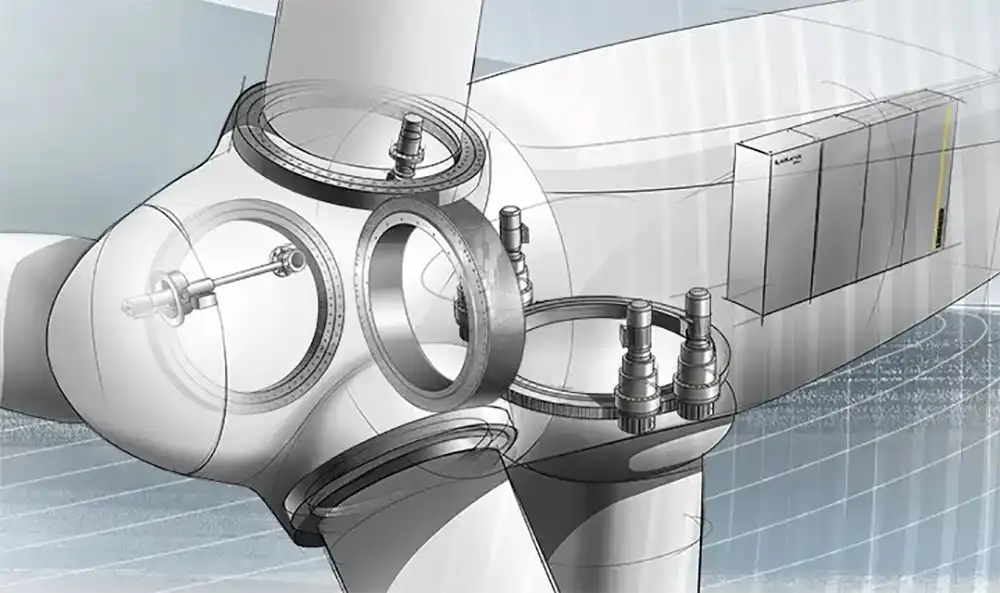What are the Main Components of a Three-Row Roller Slewing Bearing?
Three-Row Roller Slewing Bearings represent a pinnacle of engineering innovation in rotational support technology. These sophisticated mechanical components are designed to handle complex load combinations with unprecedented precision and reliability. Unlike traditional bearings, three-row roller slewing bearings offer unique capabilities that make them indispensable in demanding industrial environments where extreme loads, multiple load directions, and precise rotational movement are critical.

How Does a Three-Row Roller Slewing Bearing Differ from Other Bearing Types?
Three-Row Roller Slewing Bearings stand out as a remarkable engineering solution that fundamentally transforms rotational mechanics across multiple industrial sectors. Their distinctive design sets them apart from conventional bearing systems, offering unparalleled performance characteristics that address complex mechanical challenges.
The primary differentiating factor lies in their multi-row configuration, which enables simultaneous load distribution across three independent roller tracks. Traditional single-row or double-row bearings are limited in their load-bearing capacity and directional flexibility. In contrast, three-row roller slewing bearings can effectively manage radial, axial, and moment loads concurrently, creating a comprehensive load-handling mechanism that surpasses conventional bearing technologies.
Each row of rollers in these bearings serves a specific functional purpose. The first row typically manages radial loads, distributing weight evenly across the bearing's circumference. The second row specializes in absorbing axial forces, providing stability during rotational movements. The third row acts as a moment load compensator, ensuring precise angular positioning and mitigating potential structural deformations.

The roller geometry in these bearings is meticulously engineered to maximize contact surfaces and minimize friction. Precision-ground cylindrical rollers with carefully calculated profiles ensure optimal load transmission and reduced wear. Advanced material sciences contribute to the development of rollers crafted from high-strength alloy steels, capable of withstanding extreme operational conditions while maintaining dimensional stability.
Manufacturing tolerances for three-row roller slewing bearings are significantly tighter compared to standard bearing types. Typically, these components are produced with micron-level precision, ensuring minimal internal clearances and maximizing mechanical efficiency. Specialized heat treatment processes enhance the rollers' surface hardness, improving resistance to wear, fatigue, and potential deformation under prolonged high-stress environments.
What Critical Design Features Enhance the Performance of Three-Row Roller Slewing Bearings?
The performance of three-row roller slewing bearings is a testament to sophisticated mechanical engineering, driven by several critical design features that distinguish them from conventional rotational support systems. Understanding these features reveals the intricate complexity behind their exceptional operational capabilities.
Raceway design represents a fundamental performance-enhancing element. Unlike standard bearings, three-row slewing bearings incorporate multi-layered raceway structures with precisely calculated curvatures and contact angles. These advanced raceways are engineered to distribute loads uniformly, minimizing localized stress concentrations that could potentially compromise structural integrity.

Material selection plays a pivotal role in performance optimization. High-grade bearing steels undergo rigorous metallurgical processes to achieve superior mechanical properties. Chromium-based alloys with enhanced carbon content provide exceptional hardness, while carefully controlled heat treatment procedures ensure optimal microstructural characteristics. These metallurgical innovations contribute to increased resistance against wear, fatigue, and potential deformation under extreme operational conditions.
Lubrication systems represent another critical design feature that significantly influences bearing performance. Advanced three-row roller slewing bearings incorporate sophisticated lubrication channels and reservoirs that ensure consistent lubricant distribution across all roller tracks. Specialized sealing mechanisms prevent contaminant ingress while maintaining optimal internal lubrication, thereby extending operational lifespan and reducing maintenance requirements.
Geometric precision in roller and raceway interfaces is meticulously controlled through advanced manufacturing techniques. Computer numerical control (CNC) machining and laser-assisted measurement technologies enable fabrication tolerances within micron-level ranges. This extraordinary precision ensures minimal internal clearances, reducing friction and enhancing overall mechanical efficiency.
Innovative surface treatment technologies further augment bearing performance. Processes like nitriding, carburizing, and advanced coating applications create protective layers that enhance surface hardness and reduce friction coefficients. These treatments contribute to improved wear resistance and extended operational lifespans, making three-row roller slewing bearings exceptionally durable in challenging industrial environments.
Why Are Three-Row Roller Slewing Bearings Essential in Heavy-Duty Industrial Applications?
Three-Row Roller Slewing Bearings have become indispensable components across numerous heavy-duty industrial applications, serving as critical mechanical interfaces that enable complex rotational movements under extreme operational conditions. Their unique design characteristics make them fundamental to industries requiring precise, reliable, and robust rotational support mechanisms.

In large-scale construction equipment such as excavators, cranes, and tunnel boring machines, these bearings provide the mechanical foundation for precise angular positioning and load management. The ability to simultaneously handle radial, axial, and moment loads allows these machines to operate with unprecedented stability and accuracy. Excavator boom and swing mechanisms, for instance, rely entirely on three-row roller slewing bearings to manage dynamic load variations while maintaining structural integrity.
Wind turbine technology represents another domain where these bearings demonstrate their exceptional capabilities. Nacelle rotation mechanisms depend on three-row roller slewing bearings to enable smooth, controlled wind direction tracking. The bearings must withstand continuous exposure to variable environmental conditions, including high wind speeds, temperature fluctuations, and potential seismic activities. Their multi-row configuration ensures reliable performance by distributing loads across multiple roller tracks, minimizing potential fatigue and mechanical stress.
Maritime and offshore engineering applications further highlight the critical role of these bearings. Offshore crane systems, ship deck machinery, and marine propulsion stabilization mechanisms require components capable of managing complex load scenarios while resisting corrosive environments. Three-row roller slewing bearings, often manufactured with specialized corrosion-resistant materials and advanced protective coatings, provide the necessary mechanical resilience for these challenging operational contexts.
Renewable energy infrastructure, including solar tracking systems and concentrated solar power plants, extensively utilizes three-row roller slewing bearings. Precise panel positioning mechanisms demand components capable of smooth, controlled rotation with minimal friction and maximum load-bearing capacity. The multi-row design ensures consistent performance across varying environmental conditions, contributing to enhanced energy generation efficiency.
Conclusion
Three-Row Roller Slewing Bearings represent a pinnacle of mechanical engineering, offering unparalleled load management capabilities across diverse industrial applications. Their sophisticated design, advanced materials, and precision manufacturing techniques make them indispensable in modern technological landscapes.

Luoyang Huigong Bearing Technology Co., Ltd. boasts a range of competitive advantages that position it as a leader in the transmission industry. Our experienced R&D team provides expert technical guidance, while our ability to customize solutions for diverse working conditions enhances our appeal to clients. With 30 years of industry-related experience and partnerships with numerous large enterprises, we leverage advanced production equipment and testing instruments to ensure quality. Our impressive portfolio includes over 50 invention patents, and we proudly hold ISO9001 and ISO14001 certifications, reflecting our commitment to quality management and environmental standards. Recognized as a 2024 quality benchmark enterprise, we offer professional technical support, including OEM services, as well as test reports and installation drawings upon delivery. Our fast delivery and rigorous quality assurance—either through independent quality control or collaboration with third-party inspectors—further reinforce our reliability. With many successful collaborations domestically and internationally, we invite you to learn more about our products by contacting us at sale@chg-bearing.com or calling our hotline at +86-0379-65793878.
References
1. Johnson, K.L. (2001). Contact Mechanics. Cambridge University Press.
2. Hamrock, B.J. (2004). Fundamentals of Fluid Film Lubrication. McGraw-Hill.
3. Harris, T.A. (2001). Rolling Bearing Analysis. Wiley-Interscience.
4. Dowson, D. (1998). History of Tribology. Professional Engineering Publishing.
5. Stachowiak, G.W. (2005). Wear: Materials, Mechanisms and Practice. Wiley.
6. Tallian, T.E. (2002). Failure Atlas for Hertz Contact Machine Elements. ASME Press.
7. Eschmann, P. (2003). Bearing Applications. Springer.
8. Palmgren, A. (2006). Ball and Roller Bearing Engineering. SKF Group.
9. Booker, J.D. (2004). Design of Rotating Elements. Springer.
10. Niememann, G. (2005). Machine Elements: Design and Calculation. Springer.

